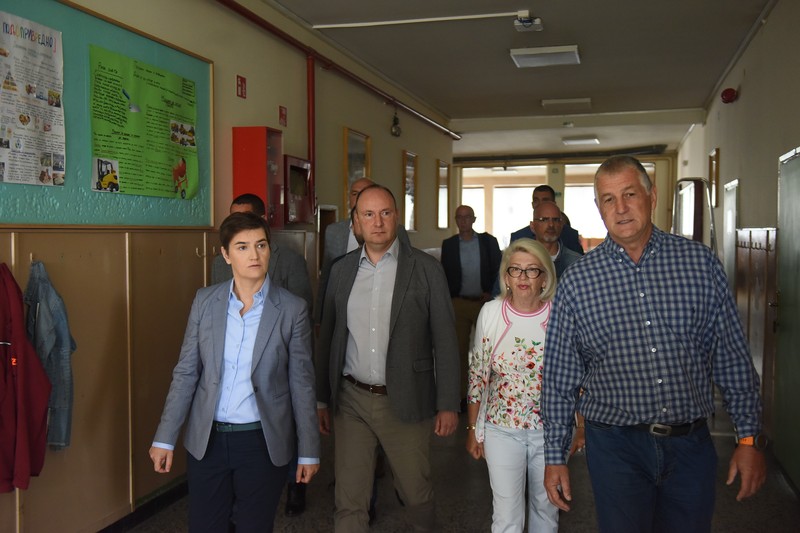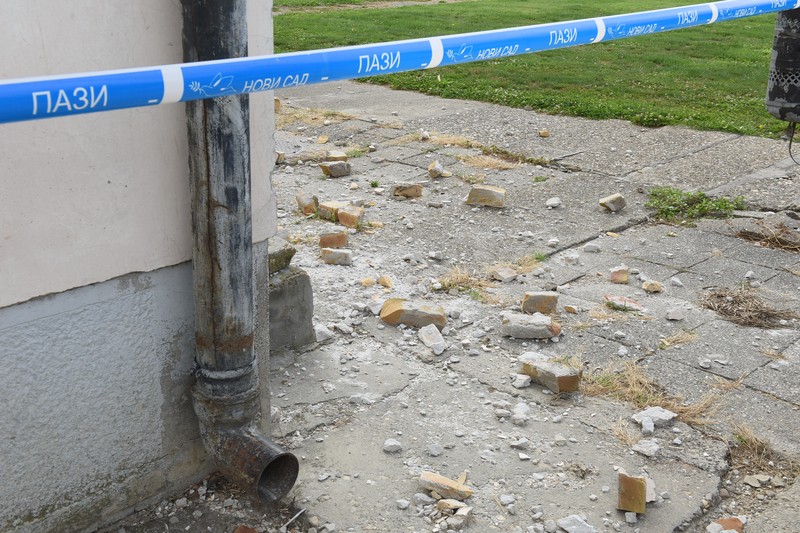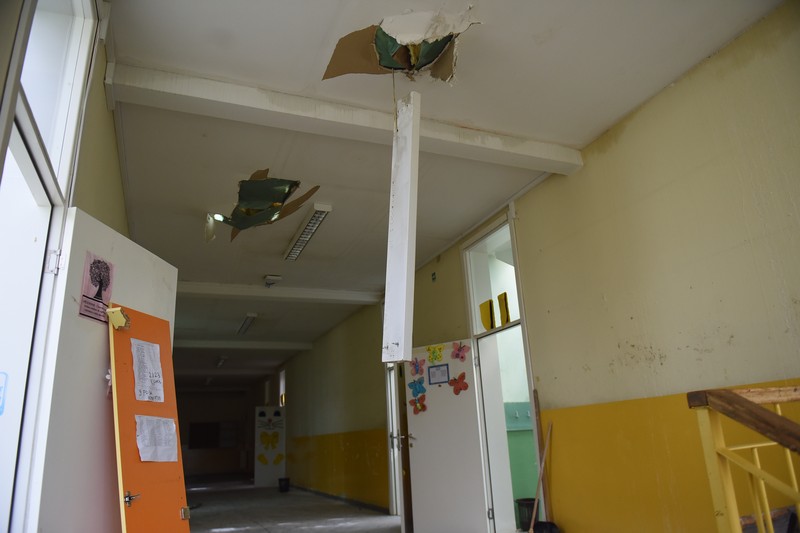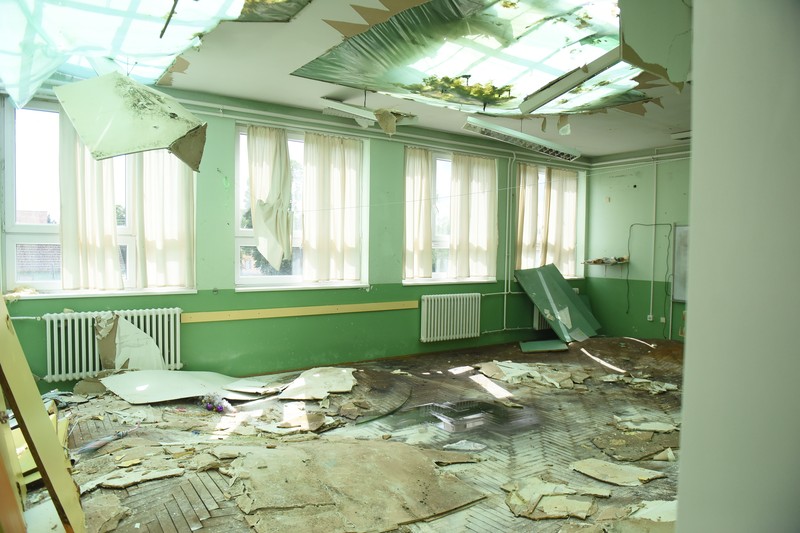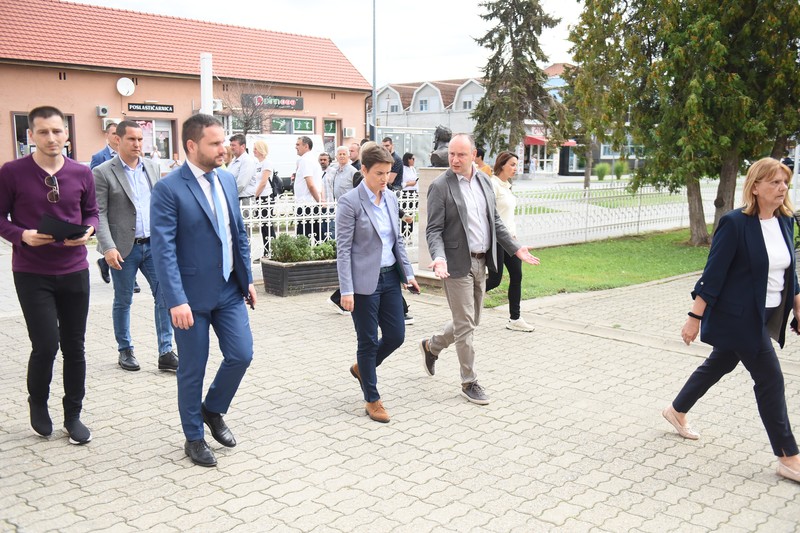Prime Minister Ana Brnabic stated today, after visiting the areas hit by the storm in territory of Novi Sad, that the damage in Serbia is measured in hundreds of millions of euros and that it is now necessary to set priorities in the repair and compensation of the damage.
- Serbia
Get to know Serbia
- Citizens
Culture and science
Health services
Pension and disability insurance
- Business
Employment
Economy
- Media
- Government
- Contact
Keep in touch
Keepin touch
Whether you have a question, comment, suggestion or any problem in the purview of the government, send us your message and we will try to respond as soon as possible. If your problem is not in our purview, we will forward your message to the relevant institution.
Households, schools priority in storm cleanup
Speaking to the press, after touring the affected areas in Begec and Futog, Brnabic underlined that the two main priorities for damage compensation are housing facilities and primary and secondary schools so that classes in the affected areas could start on 1 September.
She said that the next are health care institutions and public facilities and recalled that due to the storm, from 19 July to 24 July, 13 local self-governments declared a state of emergency and that hardest hit are Backa Palanka and Novi Sad, which she visited yesterday and today.
We have almost 12,000 households and housing facilities that are partially or totally destroyed, as well as over 1,000 public purpose buildings, specified the Prime Minister and added that it is necessary to build a new house for the Zahorac family in Backa Palanka, which has four children.
When it comes to the government’s tasks, it will help local self-governments to make records which then should be sent to the Ministry of Public Investment for the payment of damages, Brnabic said.
The Prime Minister announced that a meeting of the Working group for flood relief will be held as soon as tomorrow, to check if additional communication with local self-governments is necessary and the dynamics of payment of compensation for damage.
Previously, the Prime Minister visited the Begecka Jama Nature Park in Begec, where she was told that employees of the public company Vojvodinasume are on the ground assessing the damage, and that the damage is incalculable.
After that, she visited the Desanka Maksimovic primary school in Futog, which was severely damaged by the storm, with the roof missing in some places, and the ceilings damaged as well.
Brnabic then talked in the Mladost Youth Centre with Mayor of Novi Sad Milan Djuric and members of the Crisis Response Team about the consequences of the storm that hit the area.
Minister of Public Investment Marko Blagojevic accompanied the Prime Minister on the tour of the storm-stricken areas.
-
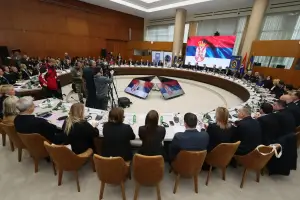 Belgrade, 27 November 2025
Belgrade, 27 November 2025Inclusion of women in security structures key to safer, more stable society
-
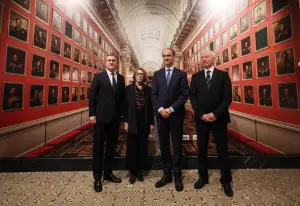 Belgrade, 26 November 2025
Belgrade, 26 November 2025Macut opens Traces of Light: Serbs in the Mirror of the Hermitage exhibition
-
 Belgrade, 26 November 2025
Belgrade, 26 November 2025Young people as visionaries of future modern Serbia
-
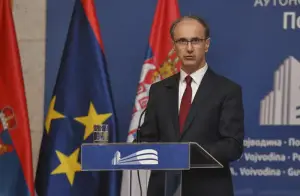 Novi Sad, 25 November 2025
Novi Sad, 25 November 2025Unification of Vojvodina with Serbia realisation of centuries-old dream
-
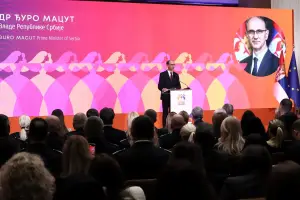 Belgrade, 25 November 2025
Belgrade, 25 November 2025Serbia makes significant step in fight against violence against women
-
 Belgrade, 23 November 2025
Belgrade, 23 November 2025Potential for further improving cooperation between Serbia, Arab countries
-
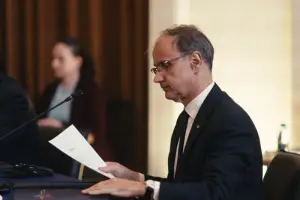 Belgrade/Tirana, 21 November 2025
Belgrade/Tirana, 21 November 2025Connected region best path to full EU membership
-
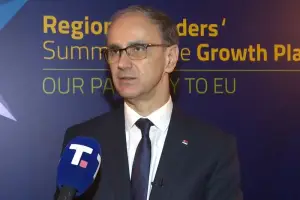 Belgrade/Tirana, 21 November 2025
Belgrade/Tirana, 21 November 2025Serbia on right track in meeting EU accession criteria
-
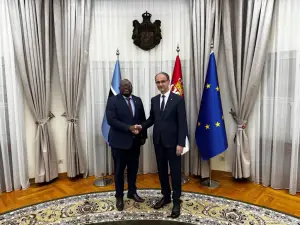 Belgrade, 21 November 2025
Belgrade, 21 November 2025Serbia, Botswana committed to peace, respect for international law
-
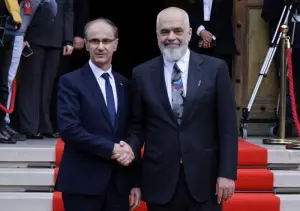 Belgrade/Tirana, 21 November 2025
Belgrade/Tirana, 21 November 2025Prime Minister Macut at Western Balkans Leaders’ Summit



